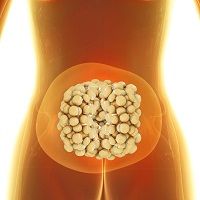Article
Lipodystrophy: What HAART Has Taught Us
Author(s):
The most common causes of lipodystrophy are insulin injection, antiretroviral drugs, and hereditary disorders. Some patients with insulin-related lipodystrophy also develop metabolic dysfunction, including insulin resistance, elevated free fatty acids level, abnormal adipocytokine secretion, and ectopic fat deposition.

Lipodystrophies—abnormal or degenerative adipose tissue conditions—come in a wide variety of types. The most common causes are insulin injection, antiretroviral drugs, and hereditary disorders. Presenting as lumps, bumps, dents, or even large depressions in the skin, lipodystrophy is distressing for patients. Some patients with insulin-related lipodystrophy also develop metabolic dysfunction, including insulin resistance, elevated free fatty acids level, abnormal adipocytokine secretion, and ectopic fat deposition.
Researchers from Bari, Italy have published an article on lipodystrophic diabetes mellitus, indicating that clinicians can learn a considerable amount from this diabetes subtype. This is especially true since researchers recently decoded its genetic bases and identified a functional role involving new proteins.
Much of what has been learned about lipodystrophy has come from the HIV/AIDs field. Patients treated with 2 types of highly active antiretroviral treatment (HAART) tend to develop a severe lipoatrophy of subcutaneous adipose tissue: nucleoside reverse transcriptase inhibitors (NRTI) analogues and protease inhibitors (PI). With abdominal fat accumulation, HAART-treated patients tend to develop severe dyslipidemia, insulin resistance, impaired glucose tolerance, and type 2 diabetes. These alterations have provided some insight about lipodystrophies in other conditions. The bottom line is that HAART’s affect on mitochondrial alterations in adipose tissue biology has demonstrated metabolic consequences.
Multiple impairments in adipose tissue functions (eg, adipocyte maturation, lipid storage, formation and/or maintenance of the lipid droplet, membrane composition, DNA repair efficiency, and insulin signaling) lead to severe metabolic and endocrine consequences. These, in turn, create specific lipodystrophic phenotypes.
Currently, metformin and the thiazolidinediones (TZDs) are the only clinically available treatments to manage lipodystrophies. Metformin reduced body weight, insulin resistance, hyperinsulinemia, and cardiovascular risk markers in patients with HAART-associated lipodystrophy without the insulin-sensitizing effect it produces in patients with diabetes. TZDs have been shown to increase subcutaneous fat in patients with lipodystrophy and HIV-associated lipodystrophy.
In the future, leptin and fibroblast growth factor 21 may also be helpful, but research is needed to assess efficacy and safety.
These authors propose a disease model for lipodystrophy that may inform us about several common metabolic diseases, including obesity, metabolic syndrome, and type 2 diabetes. The information they present addresses the condition at a molecular level, and it’s clear that many of the molecular mechanisms may become medical jargon as they are explored and found useful in addressing diabetes. They show how increasingly, many seemingly unrelated diseases have similar molecular aberrations.
This article appears in the January 2015 issue of Current Diabetes Report.




